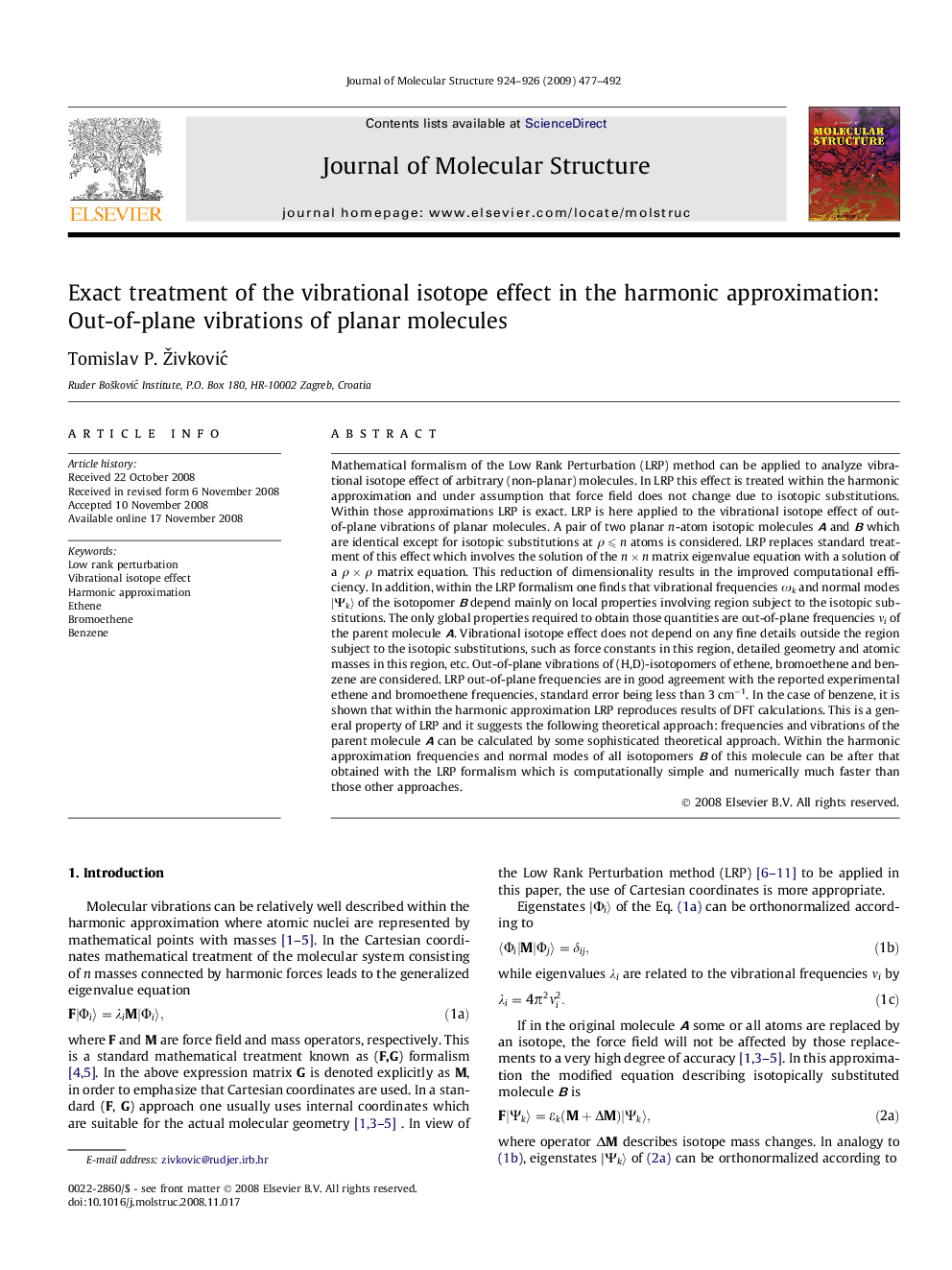| Article ID | Journal | Published Year | Pages | File Type |
|---|---|---|---|---|
| 1406686 | Journal of Molecular Structure | 2009 | 16 Pages |
Abstract
Mathematical formalism of the Low Rank Perturbation (LRP) method can be applied to analyze vibrational isotope effect of arbitrary (non-planar) molecules. In LRP this effect is treated within the harmonic approximation and under assumption that force field does not change due to isotopic substitutions. Within those approximations LRP is exact. LRP is here applied to the vibrational isotope effect of out-of-plane vibrations of planar molecules. A pair of two planar n-atom isotopic molecules A and B which are identical except for isotopic substitutions at Ï ⩽ n atoms is considered. LRP replaces standard treatment of this effect which involves the solution of the n Ã n matrix eigenvalue equation with a solution of a Ï ÃÂ Ï matrix equation. This reduction of dimensionality results in the improved computational efficiency. In addition, within the LRP formalism one finds that vibrational frequencies Ïk and normal modes â£Î¨kã of the isotopomer B depend mainly on local properties involving region subject to the isotopic substitutions. The only global properties required to obtain those quantities are out-of-plane frequencies νi of the parent molecule A. Vibrational isotope effect does not depend on any fine details outside the region subject to the isotopic substitutions, such as force constants in this region, detailed geometry and atomic masses in this region, etc. Out-of-plane vibrations of (H,D)-isotopomers of ethene, bromoethene and benzene are considered. LRP out-of-plane frequencies are in good agreement with the reported experimental ethene and bromoethene frequencies, standard error being less than 3 cmâ1. In the case of benzene, it is shown that within the harmonic approximation LRP reproduces results of DFT calculations. This is a general property of LRP and it suggests the following theoretical approach: frequencies and vibrations of the parent molecule A can be calculated by some sophisticated theoretical approach. Within the harmonic approximation frequencies and normal modes of all isotopomers B of this molecule can be after that obtained with the LRP formalism which is computationally simple and numerically much faster than those other approaches.
Keywords
Related Topics
Physical Sciences and Engineering
Chemistry
Organic Chemistry
Authors
Tomislav P. ŽivkoviÄ,
